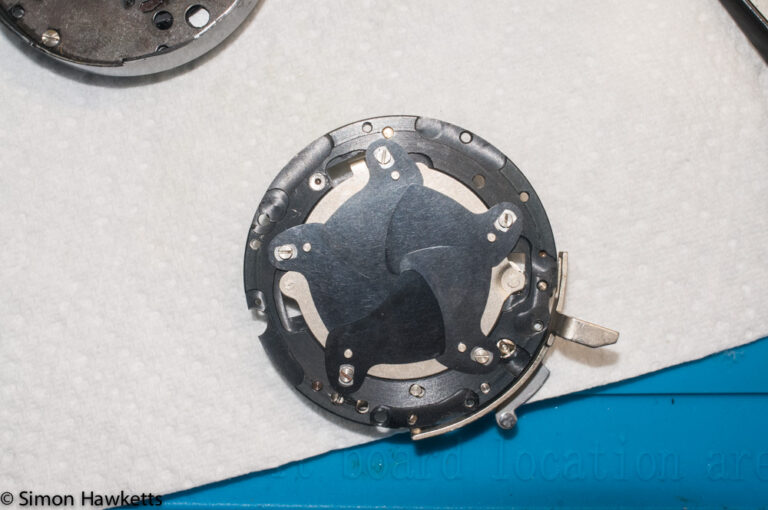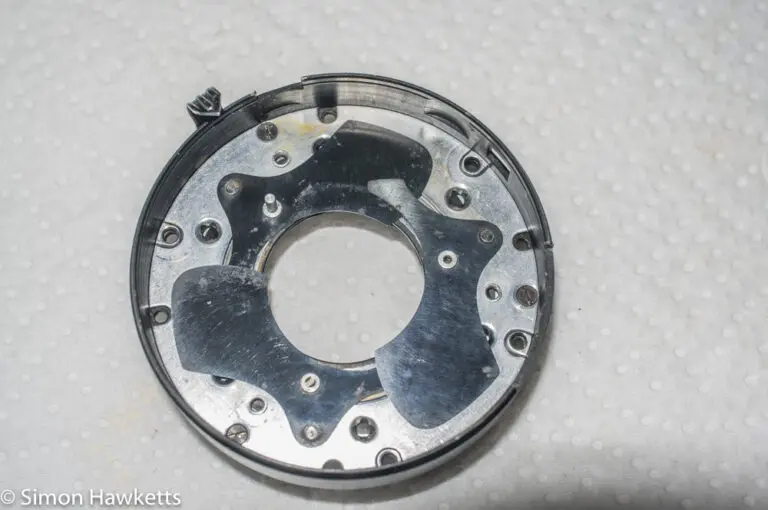The solid and sturdy Reflekta II Twin Lens Reflex camera
This post looks at the Reflekta II Medium Format, Twin Lens Reflex camera, which was made sometime between 1950 and 1955. Although this camera was quite inexpensive to purchase in 1950 compared to say a Rolleiflex, I think it’s still quite a classy unit.
My Reflekta II Camera
I purchased my Reflekta II from eBay from a seller who said that it was in reasonable cosmetic condition, but that it was sold for spares because it was not working. Since the price was reasonable (well, reasonable for a TLR) I bought it, and it was sent to me a couple of days later as the latest addition to my vintage camera collection.
When I unwrapped the package and pulled the camera from its leather case, I found the seller had been quite accurate with their description. There are a couple of areas where the paint has been rubbed, the top of the viewfinder cover has aged a bit and the viewing screen & mirror are a bit grubby, but generally it’s pretty tidy for a camera that’s been kicking around for 70 odd years.
Mechanically, however, is another story.
The shutter won’t cock or fire, but I’m pretty sure that’s because the self-timer has been set and won’t now run down. This is a common issue with old cameras, and is relatively easy to deal with – basically the self-timer needs to be removed from the shutter and immersed in some cleaning fluid (lighter fuel, or Isopropyl Alcohol) and then worked a few times to remove the years of grime and dirt that will have jammed it. The shutter is a Prontor S, which is a reasonably simple shutter to work on, so I’m fairly confident I’ll be able to fix that issue.
The next thing I found is that the focus arm is completely locked solid and won’t budge at all. This again is not an unusual problem, and normally the solution is once more a question of cleaning; this time removing the old grease in the focus helicoid and replacing it with a modern grease. Interestingly, when I did some research on the Reflekta II I found two articles and both referred to the focus mechanism being locked solid, so it seems this is a particular problem with this camera.
Finally, the lenses are dusty and have some traces of fungus just starting to grow. I think they can be rescued with some white vinegar.
Pictures of the Reflekta II Twin Lens Reflex
The pictures in the gallery below show various features of the Reflekta II camera. Unfortunately, I had to use a flash to take the images, and some are rather affected by reflections from the brightwork on the camera.
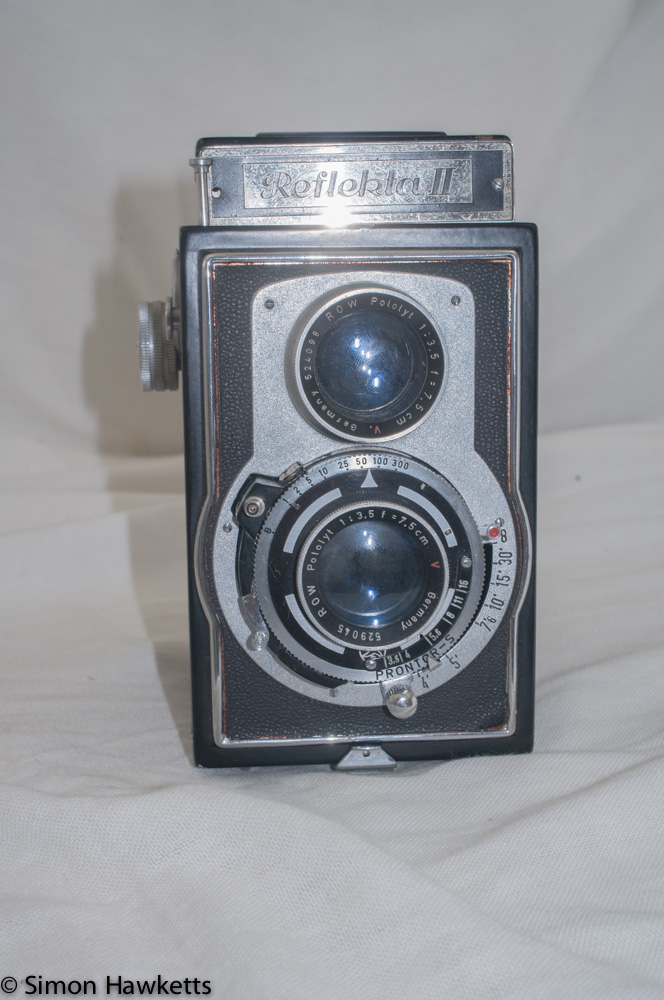
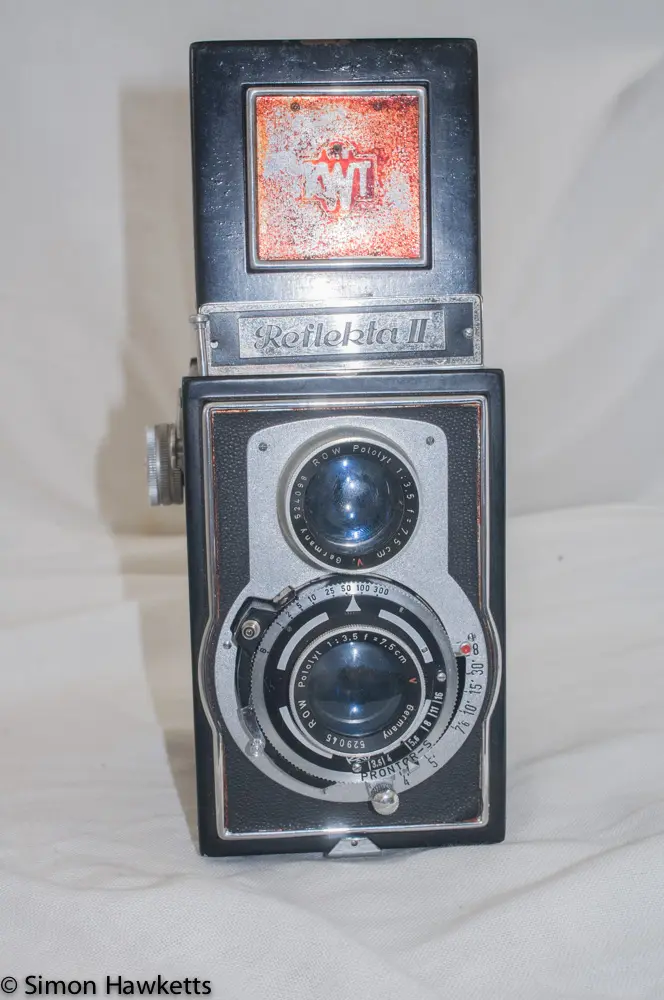
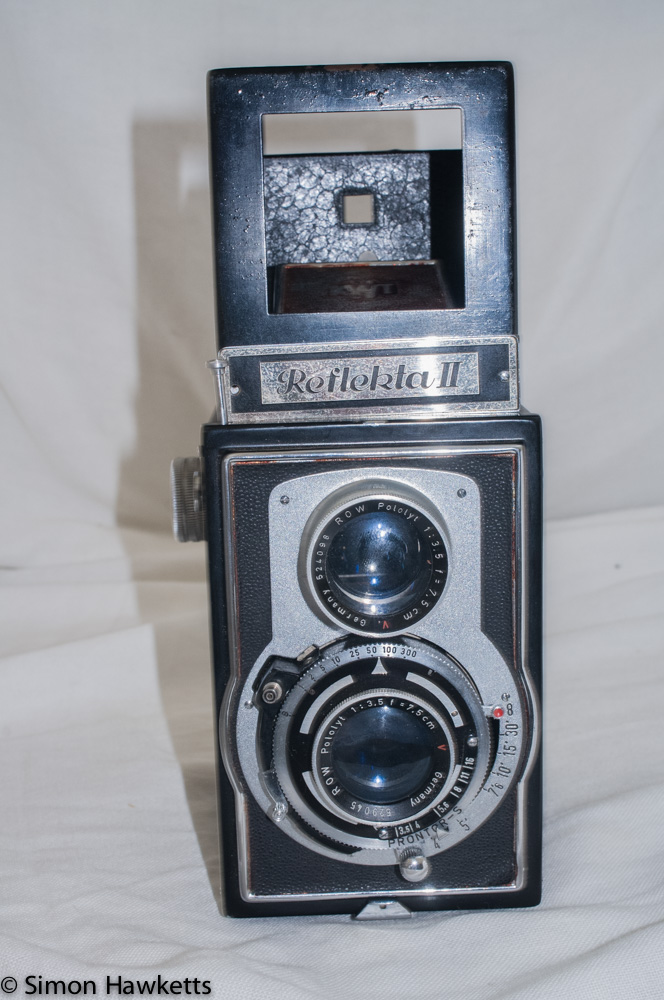
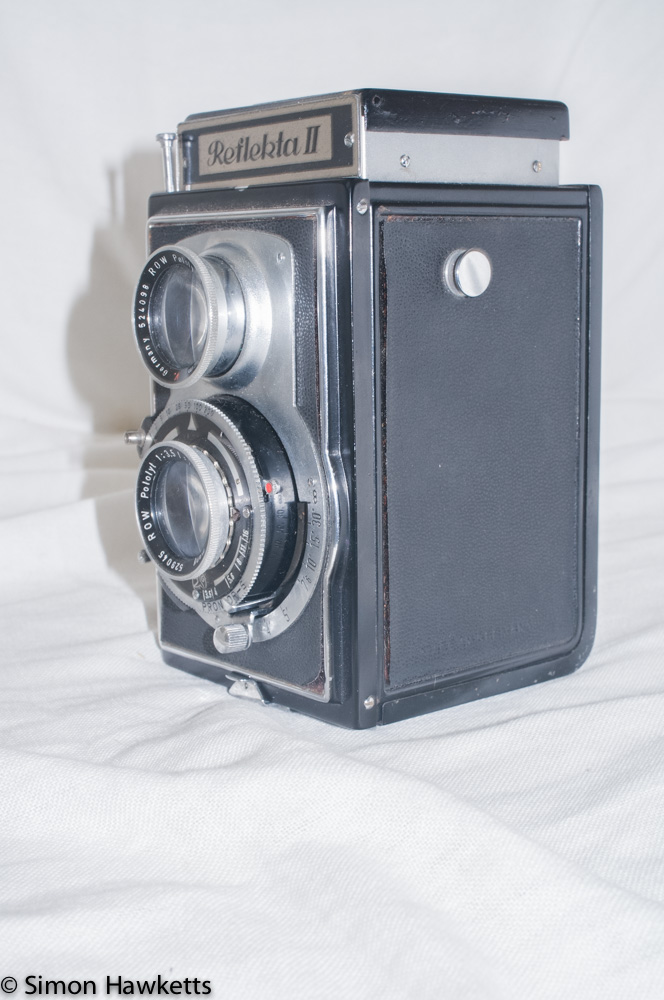
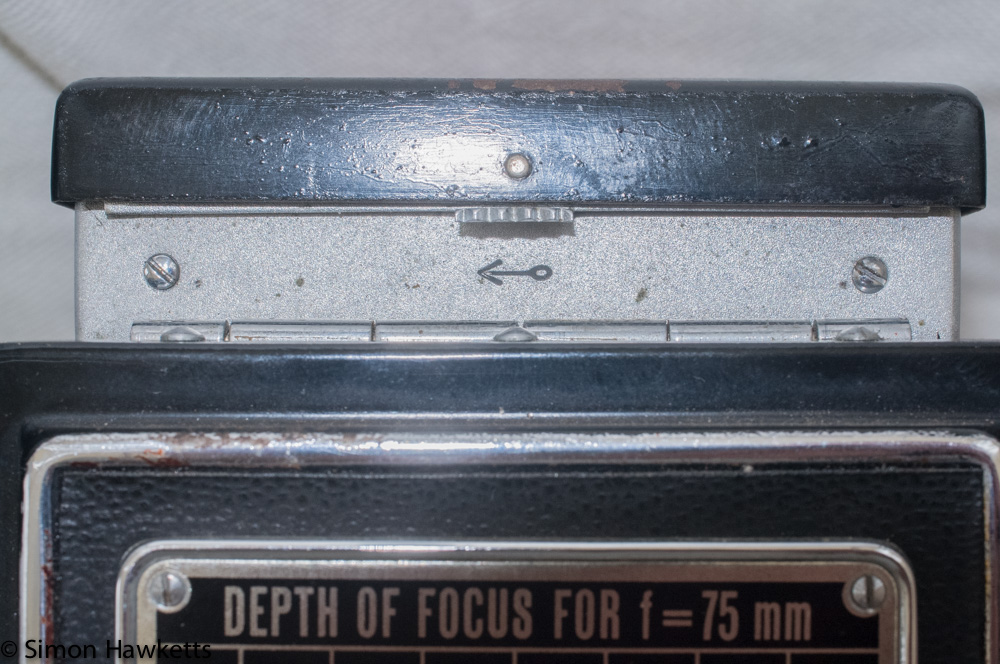
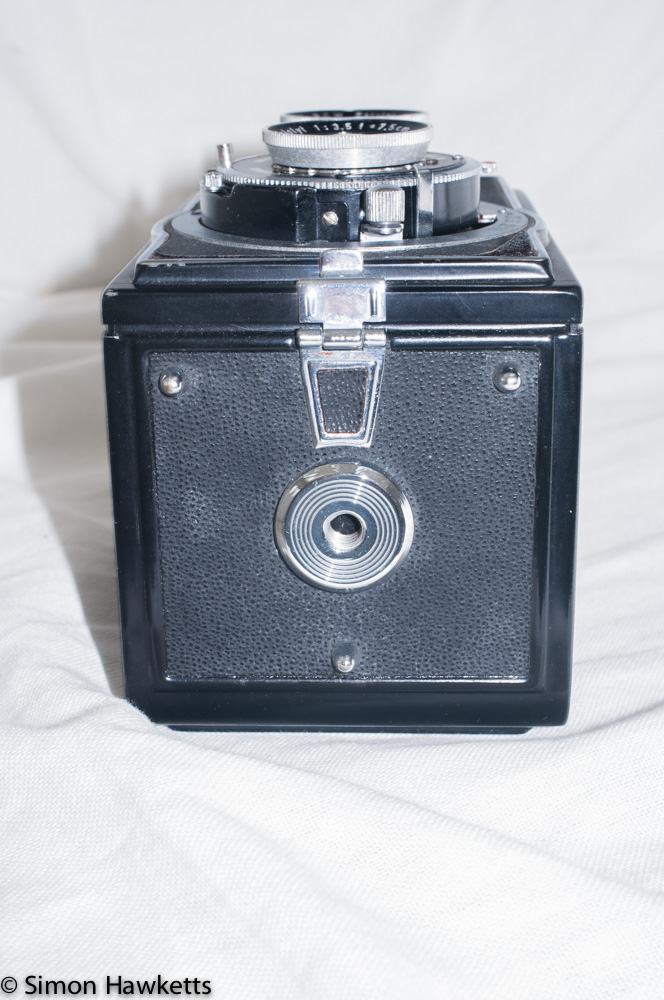
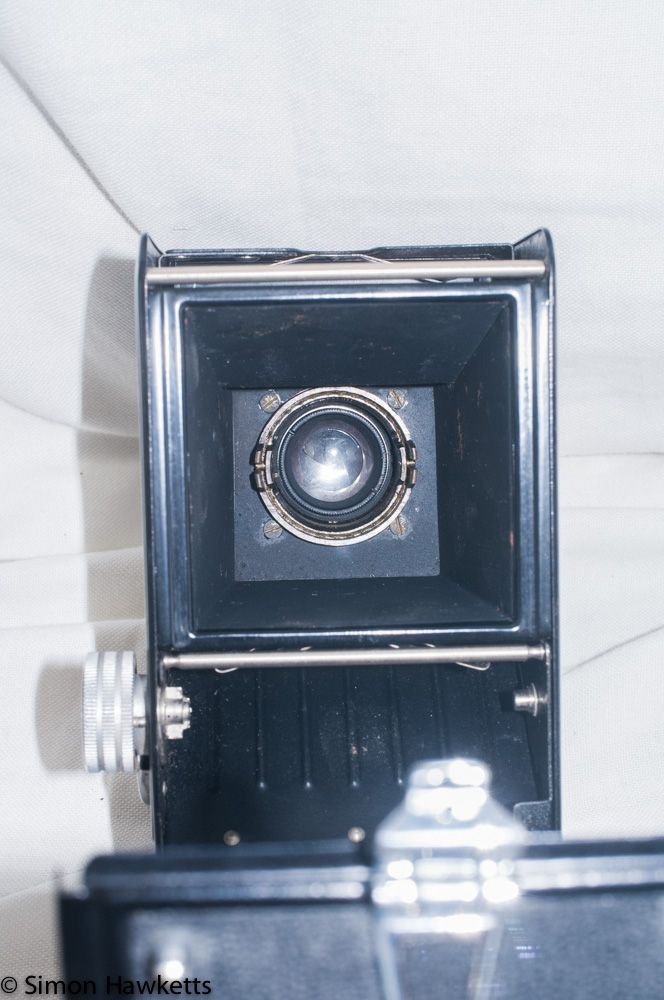
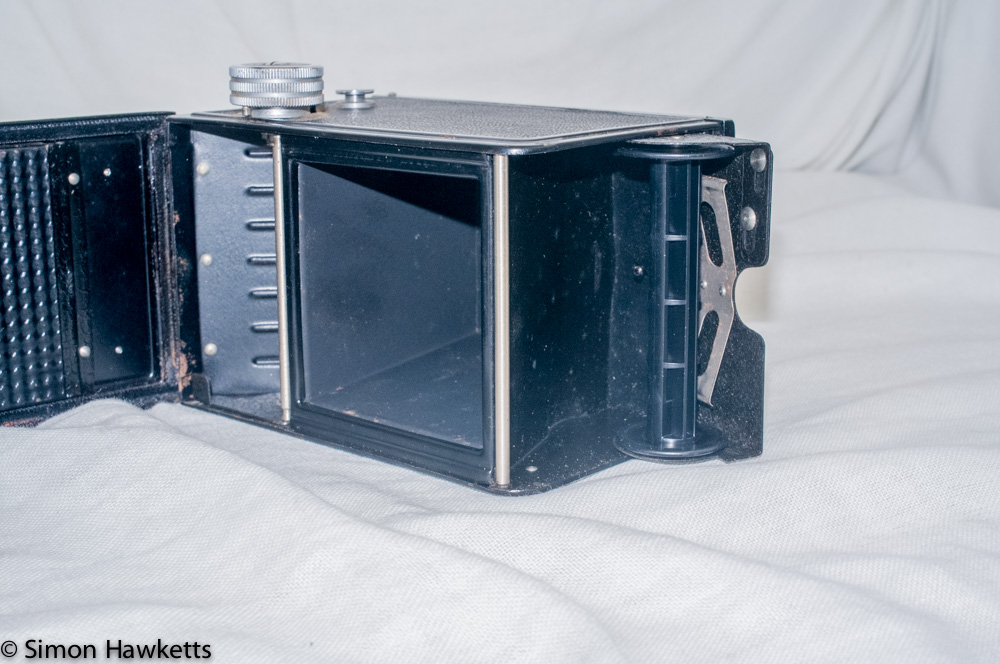
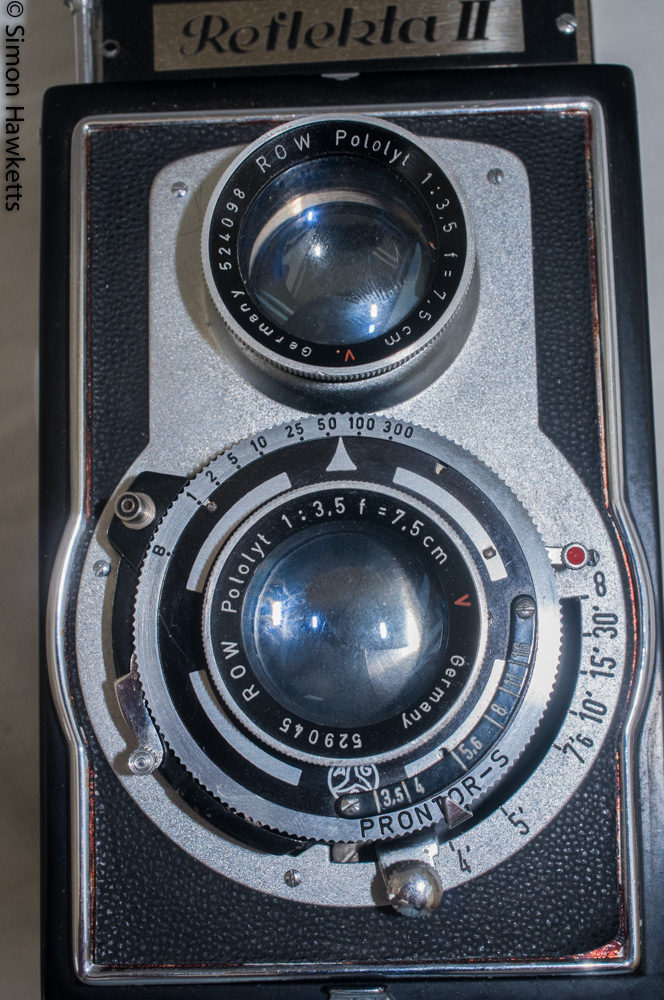
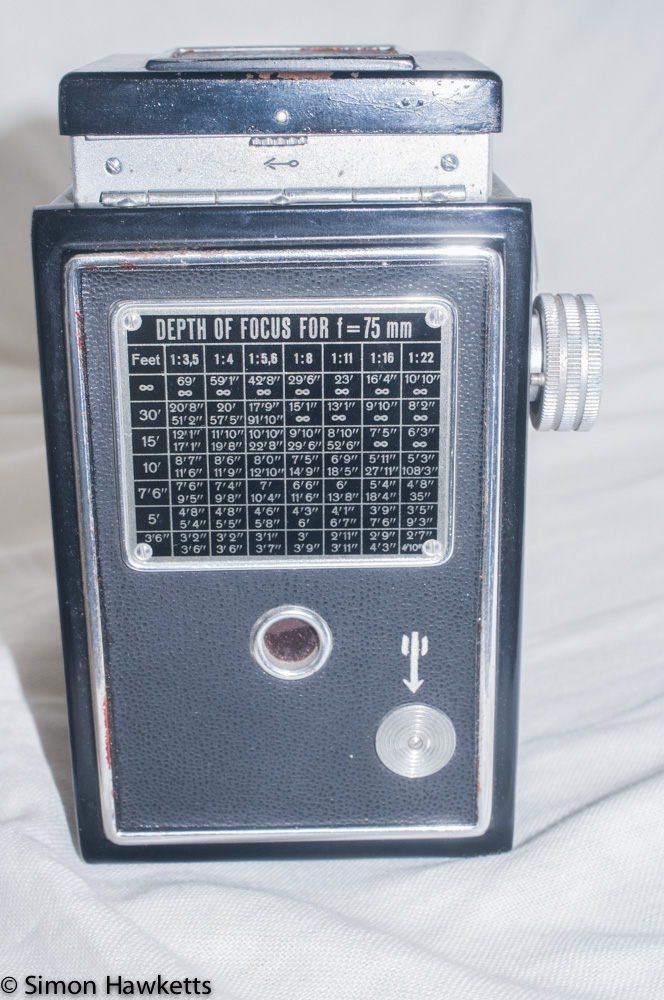
Description of the Reflekta II
The Reflekta II is a Twin Lens Reflex camera that is part of a series of TLRs made by a manufacturer called Richter in Germany, or at least the earlier version of the camera were. By the time this Reflekta II was made in about 1950, the ownership of the company had changed via mergers etc. to Welta, another German camera manufacturer.
To my mind, the camera is a nice example of the TLR design, being well-made from quite good quality material. It is certainly quite a sturdy unit, and feels quite heavy, and although weight seems a problem for SLRs or rangefinders, since a TLR is normally used at waist height, some weight adds a bit of stability to the photo making process in my opinion.
The specification of the camera is fairly unremarkable for a TLR of its day.
The shutter is an eight speed Pronto S with a minimum speed of 1/300 sec, and a flash sync terminal. The taking lens is a 75 mm focal length, f/3.5 Pololyt lens with aperture stops up to f/16. The viewing lens is the same lens type, but it has no aperture settings, remaining open all the time to give the brightest view for focusing and composing the picture.
There are very few additional controls other than the shutter, aperture and focus lever apart from the film advance which is fitted to the side of the camera body.
One quite handy feature is the addition of a Depth of Focus chart on the back of the camera, which tells the photographer how much of the picture will be in focus for each aperture setting and focus distance. Something that looks odd to modern eyes is seeing this chart written in feet and inches!1
As is typical of medium format cameras of the time, the frame counter is a red window in the back of the camera which allows the frame number on the back of the film backing paper to be read. There is also a small shield which covers this hole to stop any light leaking into the camera when it’s not being used.
To compose a photo the photographer had two options. There is the waist lever finder which is used by popping up the top cover using a small thumb control on the back and viewing down into the viewing screen, or a framing viewfinder which can be used at eye level. Normally the waist level finder would be used because when they present a big, bright view of the photo being taken, but for some situations, like sport for example, the eye level finder is to be preferred. In fact, on some TLR cameras, this viewfinder was called the sports finder.
When using the waist level screen, there is a magnifier provided that allows the photographer to get a proper, enlarged view of the scene to make sure the focus is spot on.
Reflekta II Specifications
- Reflekta II TLR camera
- Made in about 1950
- Prontor-S shutter with speeds of 1 sec to 1/300 sec + bulb
- Self-timer
- Waist level viewfinder / focus screen
- Critical focus magnifier
- Sports eye level finder
- Top of camera shutter release
- Depth of focus chart on back of camera
- Pololyt 75 mm lens with aperture f/3.5 to f/16
- Takes 12 pictures on 120 medium format film
- Red window frame counter with light shield
- Multi-exposure prevention
- Tripod bush on base
- Handbook available on-line here
My assessment of the Reflekta II TLR
This is my initial assessment based on the camera as it stands at the moment, which is a non-working model. When I have repaired the unit, I’ll revisit this assessment.
So at the moment I find a solid and sturdy unit which I think is quite an attractive and interesting camera. To properly assess it, we need to view it through the eyes of a 1950 photographer and try to imagine the areas they would be impressed by or disappointed with.
I think the double exposure prevention would be a significant positive point; film photography was quite an expensive hobby, and wasting an exposure by loosing two pictures could be quite annoying. I think also the shutter release mounted on the top of the camera is quite convenient compared to having the shutter release on the front lens.
This particular model also has the advantages of a self-timer and flash sync, which probably puts it at the top end of the many variants of the Reflekta II made.
- In some ways it’s strange that I find this strange. I was at school in the 1960s and was taught in yards, feet and inches and still use them for some things, but it looks odd seeing them used in this situation. [↩]
Discover more from Everything Vintage
Subscribe to get the latest posts sent to your email.


